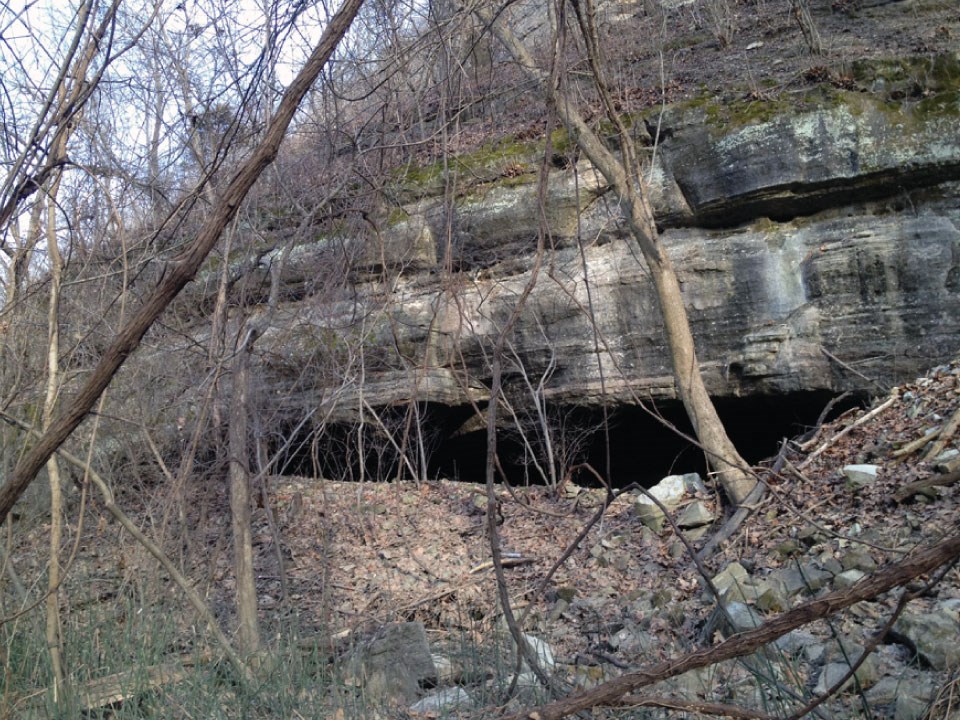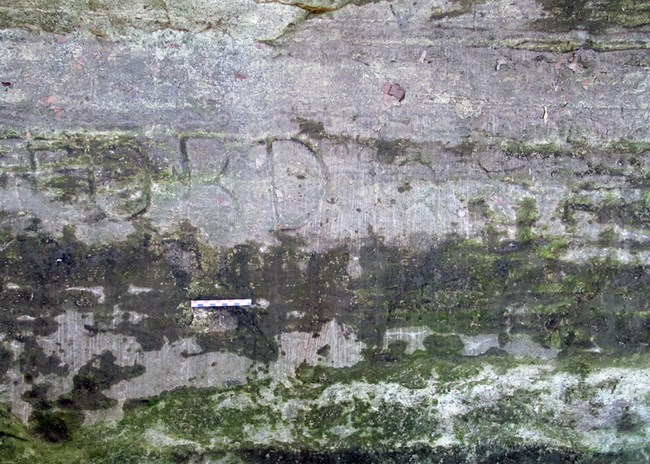Last updated: March 22, 2022
Article
William Clark’s Name in Tavern Cave

Photos: St. Louis Community College
William Clark’s carved signature on the side of Pompeys Pillar in Montana remains the only on-site, physical evidence of the Lewis and Clark Expedition.
But Clark also carved his name in at least one other location – inside Tavern Cave near St. Albans, Missouri, about 40 miles west of downtown St. Louis.
The Corps had stopped at a settlement founded by Daniel Boone and his family on May 23, 1804. About a mile farther upstream the men came to a small cave, known as Tavern Cave, a noted landmark among the French traders. Clark wrote in his journal for the day, “Called by the french the tavern which is a Cave 40 yds. long with the river 4 feet Deep & about 20 feet high, this is a place the Indians & french Pay omage to, many names are wrote up on the rock Mine among others…”
Here, Native peoples throughout time painted images (pictographs) and carved designs (petroglyphs) and French traders carved names or initials. Clark supposedly added his name to a cave wall, but there is no current confirmation of his carving. It’s believed that two centuries of periodic flooding has obscured or erased many of the paintings and engravings.

Photo: St. Louis Community College
According to a website by St. Louis Community College anthropology professor emeritus, Dr. Michael Fuller, some individuals believe that a prominent set of letters still seen today, “ORD,” were carved by Sergeant John Ordway. However, Fuller explains that this claim has been disputed and others argue that it is actually “FORD.”
The entrance of the cave was radically changed in the mid-1800s when a large amount of stone was blasted from the bluff above the opening. Tons of rock and soil spilled into the mouth of the cave as a result of the construction of a railroad grade.
The cave was added to the National Register of Historic Places in 1970 and it is a High Potential Historic Site on the Lewis and Clark National Historic Trail. The cave is on private property and is not open to the public.
